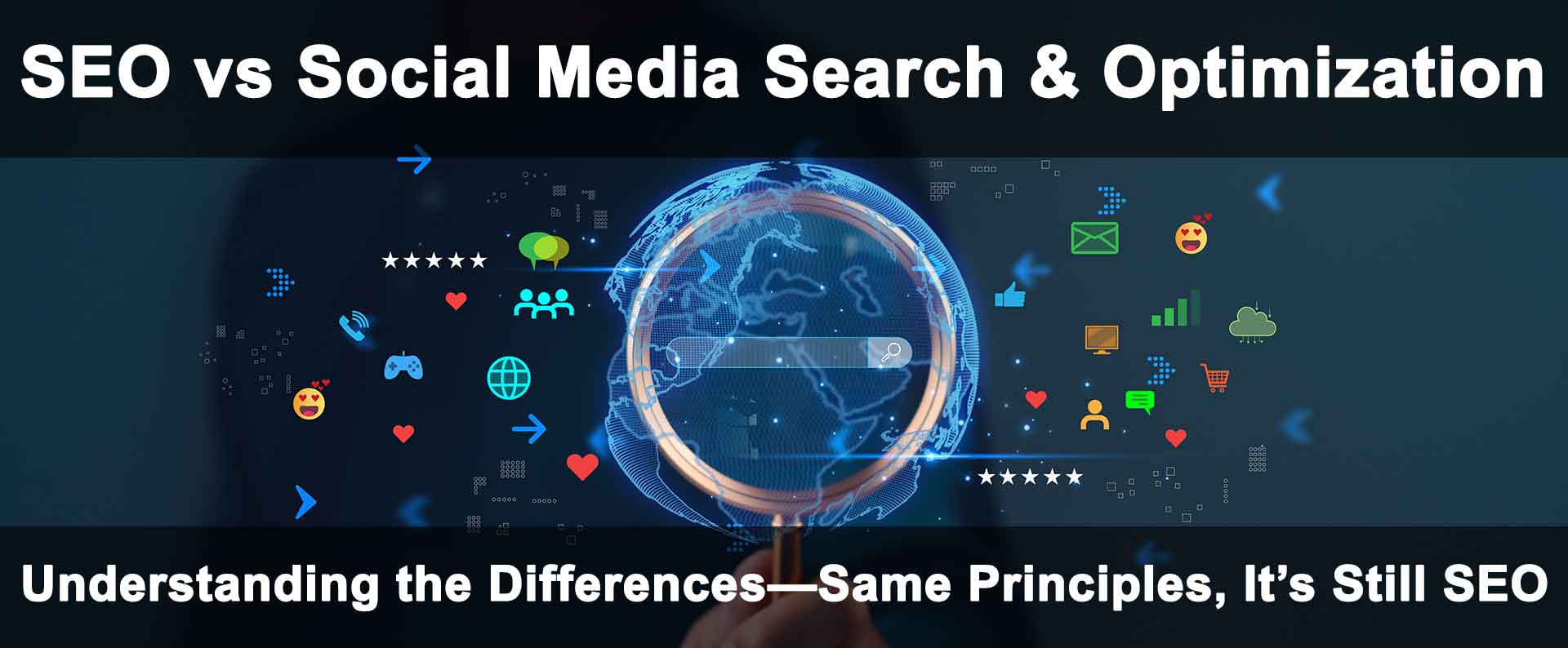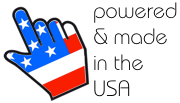The lines between traditional SEO and social media optimization are blurring. While the core principles of search engine optimization remain unchanged, the strategies for success now extend beyond Google to platforms like Instagram, LinkedIn, and TikTok.
Here’s how businesses can adapt to this shift—and why it’s still SEO at its heart.
The Evolution of SEO: From Google to Social Platforms
SEO: A Broadened Definition
SEO is a set of practices designed to improve the visibility and ranking of a website or content in search engine results pages (SERPs).
However, the term "search engine" now encompasses a broader range of platforms where users conduct searches. This includes social media platforms, which are increasingly becoming primary sources of information and engagement for many users.
Social Media as a Search Engine
Social media platforms like Facebook, Instagram, Twitter, and LinkedIn have sophisticated search algorithms that help users find content, businesses, and products.
These algorithms consider factors such as user engagement, content relevance, and profile completeness to rank search results. Therefore, optimizing your presence on these platforms can significantly enhance your brand's visibility and reach.
Common Principles: It’s Still SEO
Social media platforms now function as discovery engines, prioritizing content aligned with user intent. SEO is no longer just about ranking on Google.
Modern "search engines" include any platform where users seek answers: YouTube tutorials, Instagram hashtags, LinkedIn job searches, or TikTok product reviews.
While the platforms may differ, the core principles of SEO remain the same across search engines and social media:
- Relevance:
Match content to what users are actively searching for.
- Content Quality:
Deliver value through informative, engaging content.
- User Experience:
Optimize for a seamless user experience, whether on a website or a social media profile.
- Keyword Optimization:
Use relevant keywords to improve discoverability.
- Link Building:
Generate backlinks and social shares to boost credibility.
- Consistency:
Maintain consistent branding and messaging across all platforms.
- Technical Optimization:
Ensure profiles and content are platform-friendly (e.g., meta tags on websites, alt text on social posts).
While these principles remain constant, their execution varies across platforms. For instance, LinkedIn rewards long-form thought leadership, while TikTok prioritizes short, viral-ready videos.
Social Media Optimization: A Deeper Dive
Social media optimization requires a platform-specific approach. Here's a breakdown of key elements:
- Platform Choice:
Identify the platforms where your target audience is most active.
- Profile Optimization:
Complete all profile fields, use consistent branding (including your NAP - Name, Address, Phone Number), high-quality images, and a compelling bio.
- Content Strategy:
Create engaging content tailored to each platform's format and audience. This might include videos, stories, live streams, or interactive polls.
- Keyword Research:
Understand what your audience is searching for on each platform and incorporate relevant keywords into your posts, captions, and hashtags.
- Hashtag Strategy:
Use relevant and trending hashtags to increase discoverability. Don't overdo it – focus on quality over quantity.
- Engagement:
Respond to comments and messages promptly. When possible harness UGC to your benefit.
- Community Building:
Join relevant groups and participate in discussions. Foster a sense of community.
- Analytics:
Track your performance and adjust your strategy based on data.
Key Differences in Social Media Optimization
1. Platform-Specific Algorithms
Each platform prioritizes different metrics:
- Instagram favors engagement (likes, shares),
- LinkedIn values professional relevance,
- and YouTube emphasizes watch time.
Tailor content formats and posting schedules accordingly.
2. Content Formats & User Behavior
- Video Content:
Short-form videos (Reels, TikTok) dominate social feeds.
- Interactive Features:
Polls, quizzes, and live streams boost engagement.
- Local SEO:
Platforms like NextDoor, Bing Places, and GMB (now Google Business Profile) drive foot traffic for brick-and-mortar businesses.
3. Reputation Management
Reviews on Yelp, Google, and Facebook impact both search rankings and social credibility. A single negative review can harm visibility across platforms.
Universal Optimization Strategies
1. Secure & Brand Your Digital Real Estate
- Claim profiles on all relevant platforms, including niche ones like NextDoor & Alignable (local businesses), or Houzz (construction/design), and so on.
- Use consistent NAP (Name, Address, Phone Number) everywhere.
2. Optimize Profiles for Search
- Bio/Description:
Include keywords (e.g., "best vegan restaurant in Chicago" for a restaurant’s Instagram bio).
- Visuals:
Use high-quality profile images and branded cover photos.
- Usernames:
Keep handles consistent (e.g., @[USERNAME] on Instagram, LinkedIn, and TikTok).
3. Align Content with Search Intent
- Align your content with the search intenet of your audience.
- Understand what your customers are searching for, and create content that answers their questions or solves their problems.
- This applies whether on a traditional search engine or social media platform.
4. Leverage Metadata & Hashtags
- Add alt text to images for accessibility and SEO.
- Use hashtags strategically (e.g., #SmallBusinessLawyer for legal services on LinkedIn).
Industry-Specific Strategies & Examples
1. Retail
- Traditional SEO:
Optimize product pages with long-tail keywords (e.g., “organic cotton baby clothes”). Use schema markup for product reviews.
- Social SEO:
- Instagram & Pinterest:
Post shoppable content with hashtags like #SustainableFashion and location tags.
- Facebook Shops:
Include keyword-rich product descriptions.
- Instagram & Pinterest:
- Website & Social Profiles:
- Ensure your online storefront is optimized with detailed product descriptions, high-quality images, and customer reviews.
- Update social platforms with the latest offers, seasonal products, and promotions.
- Actionable Steps:
- Use Facebook and Instagram Shops to integrate e-commerce directly within social platforms.
- Regularly use hashtags specific to your products and local areas (e.g., #SmallBizRetail, #LocalFashion).
Examples:
- Create Interactive Content:
Polls or quizzes about customer preferences can drive engagement.
- Utilize User-Generated Content:
Encourage customers to share their experiences with your products.
2. Restaurants
- Traditional SEO:
Claim and optimize Google My Business with menu keywords (“vegan brunch downtown”).
- Social SEO:
- Instagram:
Post Reels with trending food hashtags (#TacoTuesdayLA) and geotags. - Yelp:
Encourage reviews and respond promptly.
- Instagram:
- Local SEO & Social Presence:
- Optimize other verified directory profiles like Yelp & Bing Places with current menus, images, and operational hours.
- Engage with local food influencers and encourage customers to share their experiences.
- Actionable Steps:
- Post daily on platforms like Instagram and Facebook using geotags and food-specific hashtags (e.g., #Foodie, #RestaurantName).
- Incorporate user-generated content and reviews into your content strategy.
Examples:
- Post Behind-the-Scenes Content:
Show how dishes are prepared to create a connection with customers.
- Engage with Followers:
Respond promptly to comments and reviews to enhance your brand's reputation.
3. Hospitality
- Traditional SEO:
Target keywords like “pet-friendly hotels in Miami” and optimize for travel blogs.
- Social SEO:
- Instagram & TikTok:
Share virtual tours with hashtags like #LuxuryTravel. - Nextdoor:
Post local event partnerships (e.g., “Stay with us for Art Festival Week!”).
- Instagram & TikTok:
- Brand Trust & Visibility:
- Ensure your website and social media profiles feature guest testimonials, high-quality images of the facilities, and updated amenities.
- Use virtual tours or live streams to showcase hotel features.
- Actionable Steps:
- Implement regular blog updates about local attractions and events.
- Leverage user reviews on TripAdvisor, Facebook, and Google, linking these reviews to your overall SEO strategy.
Examples:
- Promote Local Attractions:
Share posts about nearby events or attractions to draw visitors.
- Leverage Reviews:
Highlight positive customer experiences to build trust.
4. Construction
- Traditional SEO:
Optimize service pages for “home renovation contractors [City]” and showcase project galleries.
- Social SEO:
- YouTube:
Upload time-lapse videos of projects with titles like “Kitchen Remodeling Tips.” - LinkedIn:
Share case studies with hashtags #HomeImprovement.
- YouTube:
- Local & Industry-Specific SEO:
- Develop content that highlights project portfolios, case studies, and client testimonials.
- Use platforms like LinkedIn to connect with industry professionals and showcase completed projects.
- Actionable Steps:
- Optimize business profiles on industry-specific directories and local review sites.
- Share project progress photos and behind-the-scenes videos, and use hashtags like #ConstructionLife, #BuildingSuccess.
Examples:
- Showcase Project Progress:
Regularly update followers on ongoing projects with before-and-after photos.
- Educational Content:
Share tips on home maintenance or remodeling to establish authority.
5. Healthcare
- Traditional SEO:
Create HIPAA-compliant blogs answering FAQs (e.g., “What is telehealth?”).
- Social SEO:
- Facebook:
Share patient testimonials (with consent) and optimize clinic hours. - LinkedIn:
Post articles on industry trends with hashtags #HealthcareInnovation.
- Facebook:
- Credibility & Trust:
- Ensure that all credentials, clinic locations, and service details are updated and consistent across all platforms.
- Post educational content addressing common health questions and showcasing industry expertise.
- Actionable Steps:
- Use platforms like Facebook and LinkedIn to post patient testimonials, wellness tips, and health stories.
- Incorporate relevant metadata (e.g., hashtags like #HealthyLiving or #ClinicName) and ensure compliance with privacy regulations.
Examples:
- Share Success Stories:
Highlight patient testimonials (with consent) to foster trust.
- Provide Value:
Post health tips, infographics, or webinars on relevant topics.
6. Professional Services (Legal, Accounting)
- Traditional SEO:
Publish blog posts on “How to Choose a Small Business CPA” or “Divorce Laws in Texas.”
- Social SEO:
- LinkedIn:
Share whitepapers and use hashtags like #TaxTips2024. - YouTube:
Explain complex topics in short videos (e.g., “LLC vs. S-Corp”).
- LinkedIn:
- Professional Image & Content Authority:
- Maintain a professional and authoritative online presence with a consistently updated website, blogs, and social media profiles.
- Share insights, case studies, and industry news regularly on platforms like LinkedIn.
- Actionable Steps:
- Optimize profiles with professional headshots, biographical details, and client testimonials.
- Use industry-specific keywords and ensure consistent NAP details across directories.
- Engage in community forums or Q&A sites like Quora or industry-specific groups to enhance visibility.
Examples:
- Use Case Studies:
Share detailed success stories to illustrate your expertise.
- Offer Free Resources:
Provide downloadable guides or templates to attract potential clients.
Conclusion: It’s All SEO—Just Different Playgrounds
Whether you’re optimizing for Google or Instagram, the goal remains the same: Be where your audience is searching, and deliver value.
By applying SEO fundamentals—keyword relevance, technical optimization, and user-centric content—businesses can dominate both traditional and social search landscapes.
Regularly audit your presence, experiment with platform-specific features, and remember: In a world where every platform is a search engine, visibility is credibility.













